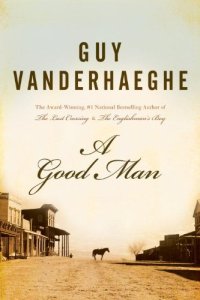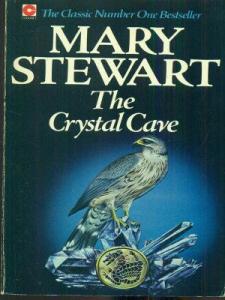 I’ve been a life-long reader and can’t imagine anything more satisfying than curling up with a book and losing yourself in its pages. If I were a foodie, it would be equivalent of eating my way through five star restaurants. As a child of immigrant parents, I had to wait until the first grade before someone taught me how to read. Before then, I would look at books and pretend I knew how. My older cousin once called my bluff, and I made up some story on the spot to convince him. And so a writer was born.
I’ve been a life-long reader and can’t imagine anything more satisfying than curling up with a book and losing yourself in its pages. If I were a foodie, it would be equivalent of eating my way through five star restaurants. As a child of immigrant parents, I had to wait until the first grade before someone taught me how to read. Before then, I would look at books and pretend I knew how. My older cousin once called my bluff, and I made up some story on the spot to convince him. And so a writer was born.
Imagine my despair when I realized that somewhere along the road, I’ve become a pizza critic. Figuratively, of course.
Early in my husband’s career, he went from a typical university student who lived on pizza to working in the food service industry as, yes, a pizza inspector. It was his job, over many years, and for a couple of major pizza chains, to go to these stores and check their product (and other things). For years, he couldn’t order a pizza without analysing the darned thing: from the rise and the stretch and the distribution of toppings and the quality of the cheese. Those of you in the industry are nodding your heads because these terms have meaning for you. But as a civilian, all you know is that the pizza tastes good (or not).

I am a pizza critic but instead of analyzing the rise and stretch of the pie, I’m picking apart books for style, character, pacing and plot. I don’t mean to do it, but living and breathing story as a writer makes me more sensitive to gaps on the page. Where I may, as a civilian, have finished reading the book with a vague sense of ‘meh’, now I can’t help analyzing it. The character arc is weak. There is no ‘world normal’ in this, the pacing is off, etc. It’s diminished my reading experience in one way because I’m no longer able to slug through ‘meh’ anymore; on the other hand, it’s heightened my appreciation for well-crafted stories and the subtlety that underscores exquisite storytelling. Here are a couple of examples.
A Good Man by Guy Vanderhaeghe

If you want to learn how to weave backstory through a complex story, read Guy Vanderhaeghe and take notes. We all get tripped up with backstory; new writers especially want to throw in their character’s cereal eating preferences and family tree. But good backstory, really the only kind we should include on the page, matters to the story. It has a place in the character arc. It isn’t a nice to know; it’s a must understand. True masters know how to thread the backstory with perfect balance. Too much in the beginning and the reader is snoring. Too little, the writer is accused of withholding. The trick, having admired and picked apart A Good Man, is to give us as much as we need when we need it and no more.
In A Good Man, the story opens with the protagonist’s father, a man of wealth, has bought out his commission. We learn that the protagonist’s service record hasn’t been exemplary and there is a blemish that no one talks about. That’s all for now and that’s enough. But as the story progresses, we gradually learn more about this past action until the end we understand how deeply this has impacted the character’s sense of worth. We see how this backstory has driven the character. It’s a beautifully constructed and flawlessly revealed backstory.
The Crystal Cave (Merlin trilogy) by Mary Stewart

I read this book to pieces in my late teenage through my twenties until the binding gave out. It took me twenty-five years to finally get another copy, and with a great deal of trepidation, I re-read it. Loved it! As well as re-discovering the magic of this story, I now saw it from fresh eyes. No one does description like Mary Stewart.
As writers, we are encouraged to use the five senses. Done well, it transports the reader into the fictional world. Done not so well, it overloads the reader with meaningless description. Think of a stew with every known spice thrown in willy-nilly.
Mary Stewart uses description not only to establish setting but also to show character. The protagonist in this trilogy, the Merlin of legend, is a man with psychic gifts and above average intelligence. He’s an herbalist, a naturalist, a bard and an engineer. No magic wand. He’s a character in tune with the world around him and the descriptions heighten that link. Instead of calling it a bird, the writer names it a marlin. She uses the specific rather than the general.
I’ve only covered two elements of craft: backstory and description. In my pizza analogy, these would be the equivalent of rise and stretch.
Now your turn. Do you have any examples that show good distribution of toppings and quality of cheese?
Yes excellent. So what do I consider beautifully done. As I studied it closely, and this might be a surprising choice but actually I think Wolf Hall does well as regards structure. I would rate Katherine by Anya Seton.
LikeLiked by 1 person
I actually enjoyed Wolf Hall as well and there is much to admire about it. Even the pronoun confusion issue only highlighted for me how deep in Cromwell’s POV we were. Katherine is a classic. 🙂
LikeLike
Cryssa, I know just what you mean about the challenge of reading once you’ve become a writer. It’s difficult to retire the inclination to note points of craft. One writer who can sweep me deep into a story is Joseph Boyden. Every sentence appears so effortless and in common language, yet packs so much meaning. Also, I can hear the voices of his characters in my head when I read. My answer is a bit lengthy but the question was such fun to think about.
LikeLiked by 1 person
That is the mark of a master- to make it look effortless.
LikeLiked by 1 person
Great post – I’m already a fan of everything Mary Stewart has ever written, I’ll need to look out for Guy Vanderhaeghe.
LikeLiked by 1 person
I am too and I’ve read everything she’s written. Thanks for the compliment!
LikeLiked by 1 person
You’re welcome! What’s your favourite Mary Stewart? Mine varies but is probably most often Madam, Will You Talk? – or whichever one I’m reading…
LikeLiked by 1 person
The Crystal Cave series for sure but if we take those off the table (because they really were different from most of her work), it would have to be Touch Not The Cat. I loved the mystery of who her lover was and the concurrent story that made everything make sense in the end. I enjoyed Madam, Will You Talk very much too. I recently found her impossibly to find novella Wind Off the Small Isles in an old book store. Very happy find!
LikeLiked by 1 person
I love the Merlin books too, I haven’t read them so often because they are “meatier” but I think 2017 could be the year I take them on again!
About the Wind off the Small Isles, did you know it’s actually a sequel to an earlier magazine short story about Perdita? I blogged about it when it was re-released in the UK this autumn. I wish so much that the third part had been written!
LikeLike
No I didn’t know that. Do you have a link to that post? I’d like to read it. I reread the Merlin books until they literally disintegrated. After many years I tried to find replacement copies and nothing was to be found. Finally they were reprinted and when I reread them (many years after the first reading) I felt like I found an old friend. They really are beautifully written.
LikeLike
Here’s the link https://marystewartreading.wordpress.com/2016/09/21/re-issue-of-the-wind-off-the-small-isles/
Must have been lovely to rediscover the books after a long gap like that! I agree about Mary Stewart’s writing, it is exquisite.
LikeLiked by 1 person
Thanks! I’ll check it out.
LikeLiked by 1 person